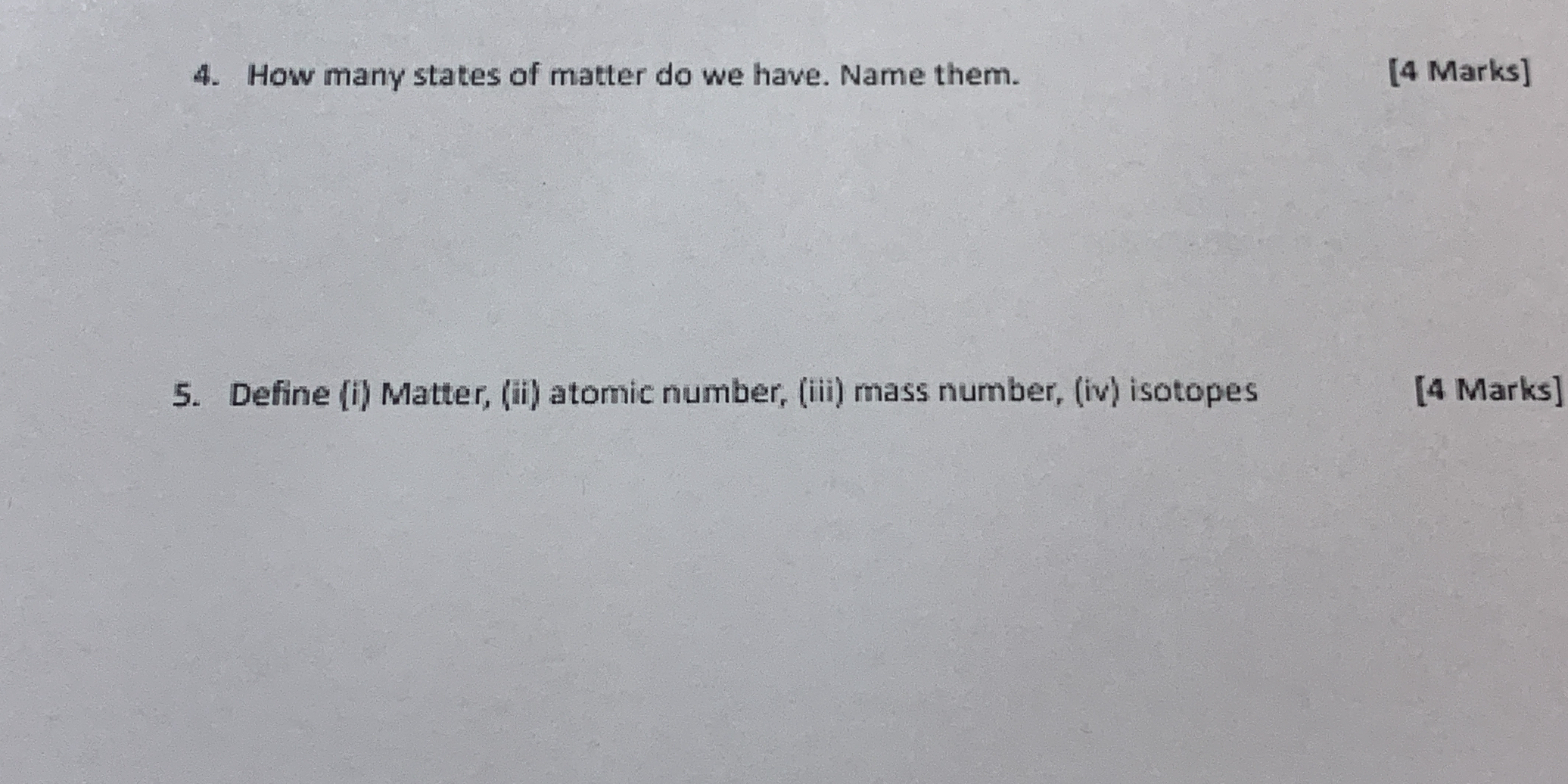How many states of matter do we have? Name them. Define (i) Matter, (ii) atomic number, (iii) mass number, (iv) isotopes.

Understand the Problem
The question is asking for the states of matter and their names as well as definitions for matter, atomic number, mass number, and isotopes. It requires knowledge of scientific concepts.
Answer
Four main states: solid, liquid, gas, plasma. Definitions: Matter, Atomic number, Mass number, Isotopes.
The main states of matter are solid, liquid, gas, and plasma. (i) Matter is anything that has mass and occupies space. (ii) Atomic number is the number of protons in an atom's nucleus. (iii) Mass number is the sum of protons and neutrons in the nucleus. (iv) Isotopes are variants of elements with the same atomic number but different mass numbers.
Answer for screen readers
The main states of matter are solid, liquid, gas, and plasma. (i) Matter is anything that has mass and occupies space. (ii) Atomic number is the number of protons in an atom's nucleus. (iii) Mass number is the sum of protons and neutrons in the nucleus. (iv) Isotopes are variants of elements with the same atomic number but different mass numbers.
More Information
In addition to solid, liquid, gas, and plasma, other states of matter exist under extreme conditions, such as Bose-Einstein condensates.
Tips
Ensure understanding of differences between atomic and mass numbers; isotopes have visual similarities but differing neutron counts.
Sources
- States of matter: Definition and phases of change | Live Science - livescience.com
- Introduction to Chemistry - uen.pressbooks.pub
- Atomic structure and isotopes | Khan Academy - khanacademy.org
AI-generated content may contain errors. Please verify critical information